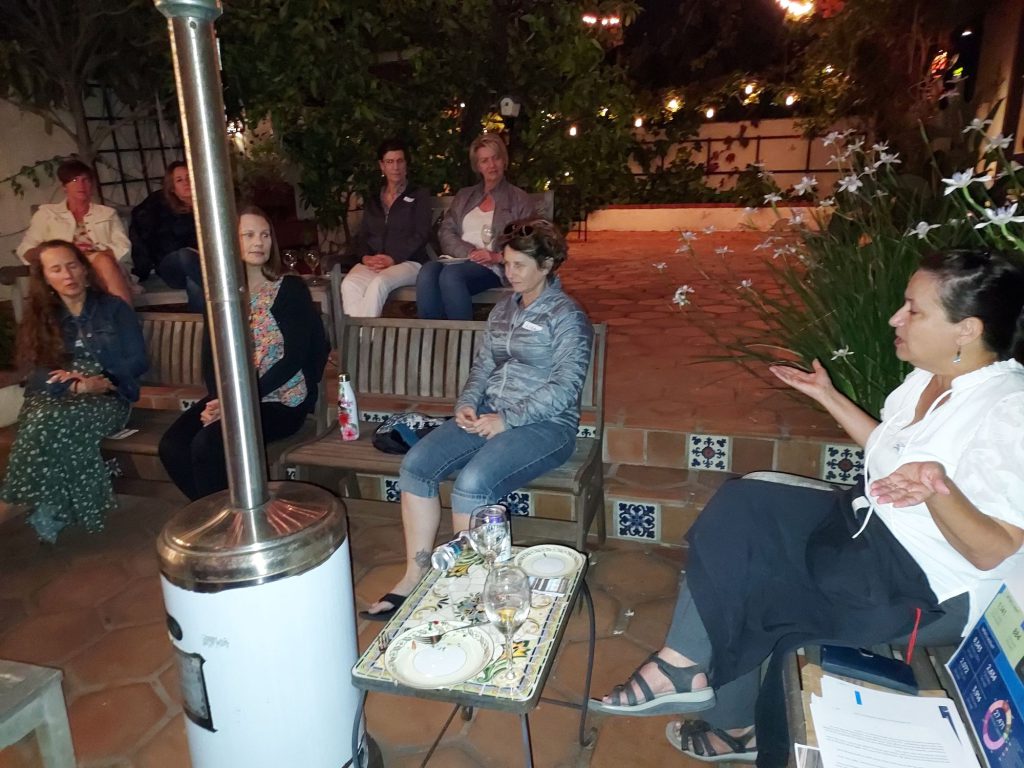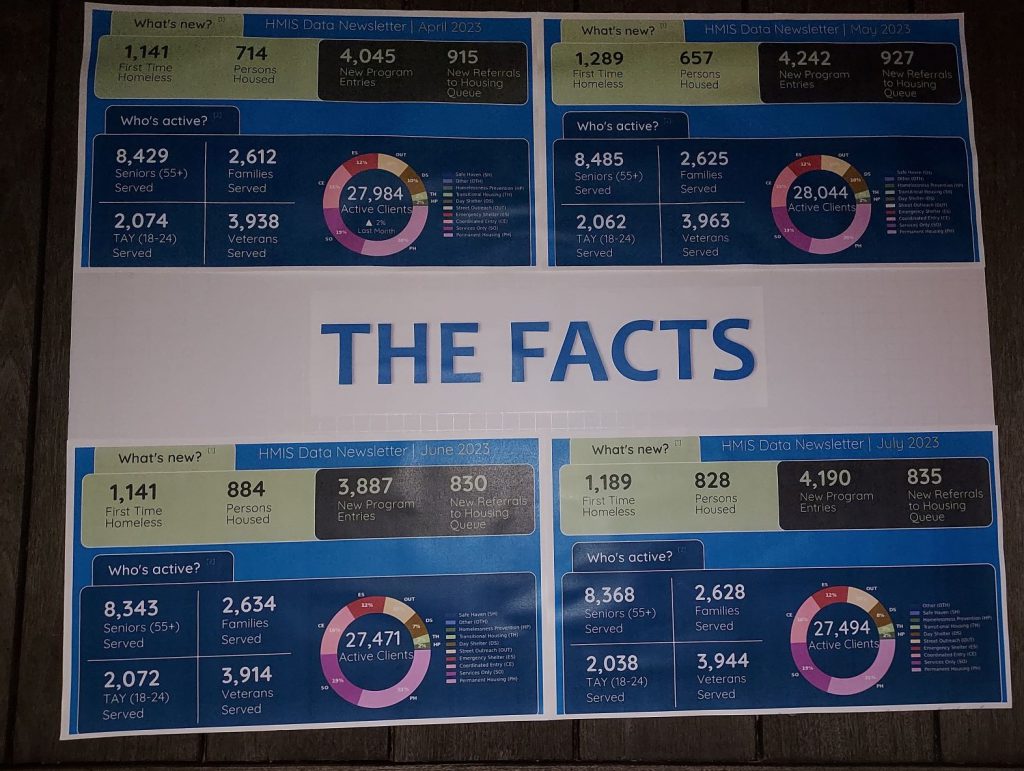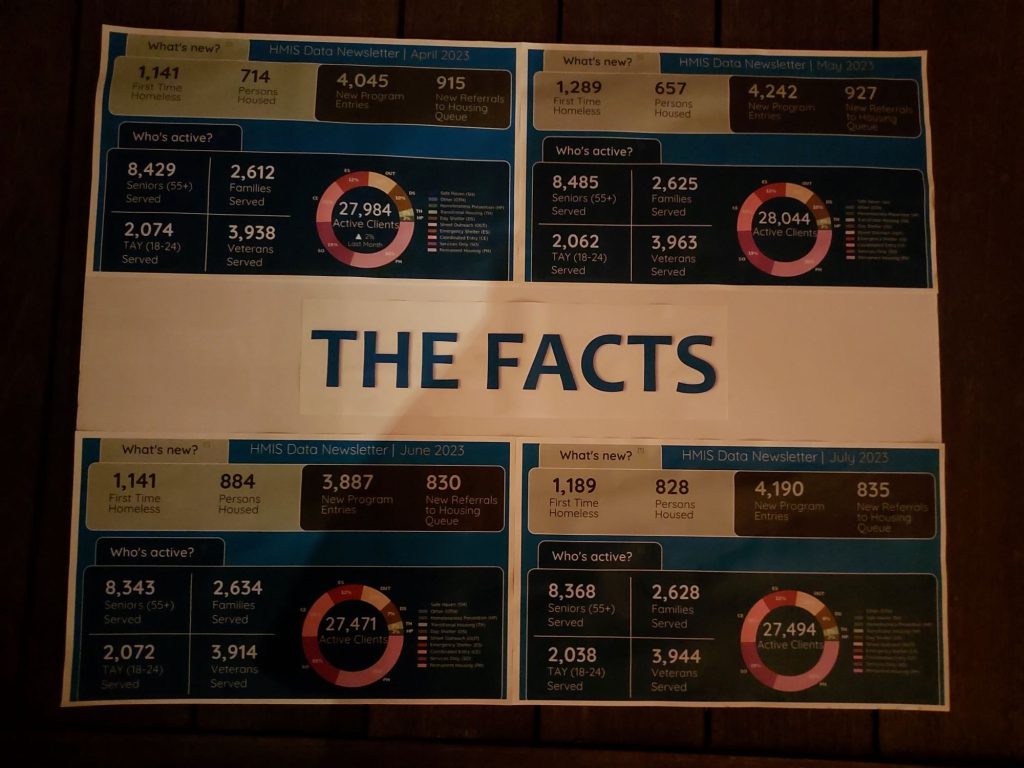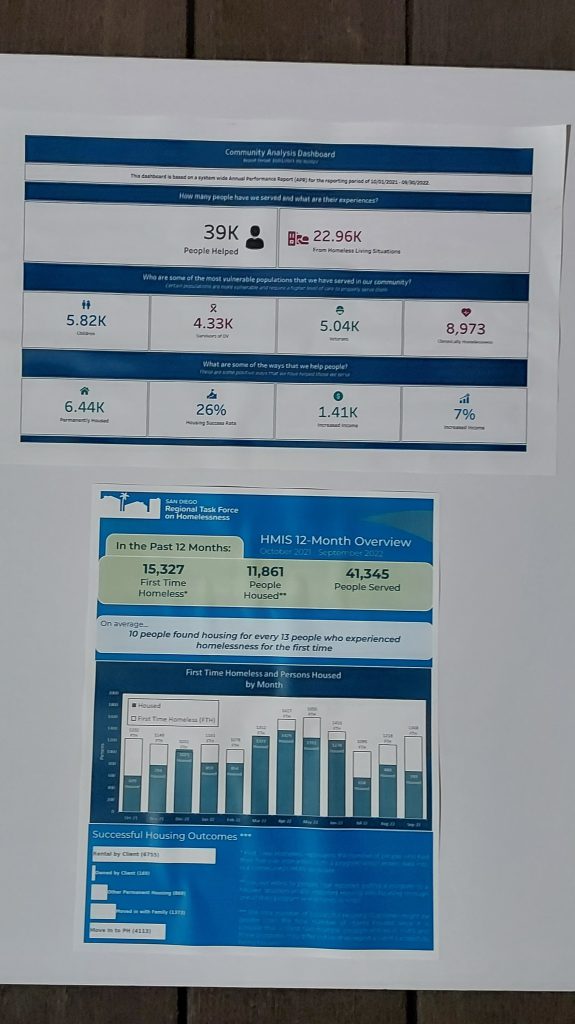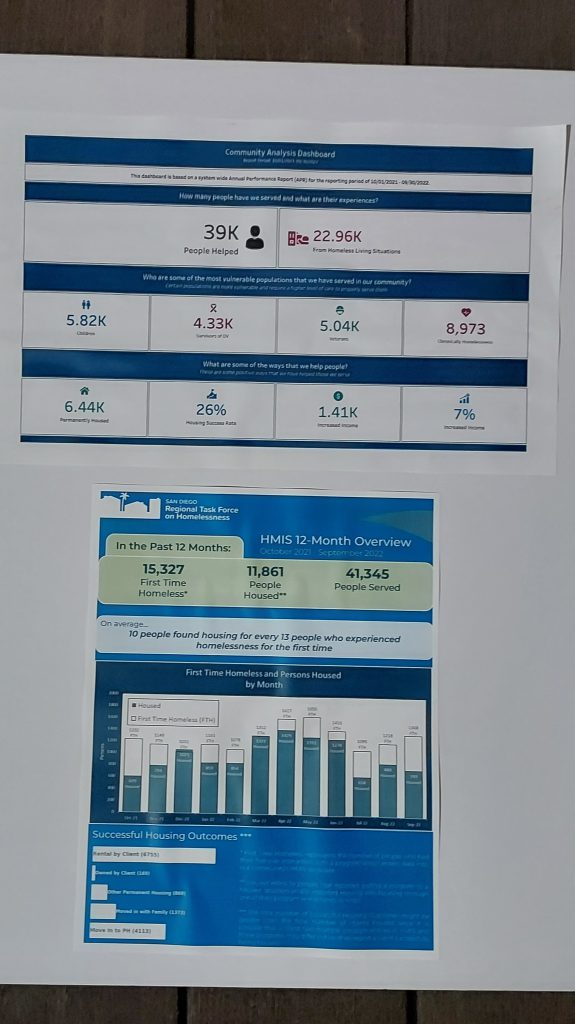Attendees: Heidi, Julie, Emily, Megan, Lisa, Krista, Alexis, Sharon, Heather, Kim V, Linda, Julie
Influential woman: Ruth Handler
Speaker: Joanne Standlee
Owned her own business for 18 years, returned to Columbia University for her masters degree. Started a non-profit “Housing 4 the Homeless”. Joanne raised two newborns of homeless woman, she and her husband brought newborns into her home.
QR codes on table flyer.
Joanne fell into her advocacy as she used her business skills to run a non-profit. The current homeless environment is based on contracts for pay for services, not outcomes. The reporting is overwhelming. Why is that when nothing is being accomplished? No checks or balances. Politicians lie about it. Councilmember Cava said that the new ordinance would not focus on elderly or most vulnerable, which was not true.
Serving 18,000 non-housed people each year. Only counted if the person sits down and completes an intensive intake process asking very personal questions about health and sexual preference.
4,500 beds exist.
Shelters aren’t safe and don’t provide the case managers. Shelters don’t have resources. Linda asked how case managers are assigned – roughly 40 people per case manager (some have a ratio of 60 to 1 case manager or 200 to 1 case manager). Software system is called “Clarity” where the Regional Task Force of Homelessness are in control of Clarity (federal grant system). Case managers need skill to work with highly traumatized population. Father Joe’s is up to lose contracts because of their mismanagement of clients.
Julie – our homeless problem stems from lack of mental and physical healthcare. Mental health is just as important as physical healthcare. Lack of basic access to healthcare. Julie has lived in other countries with public health care. She doesn’t see that changing. Fragmented and silos.
Joanne – it actually isn’t from mental health care. When we gentrified downtown, we didn’t take into consideration the people that would be displaced. Accounts for 10,000 people who no longer have access to a place to rent. Reagan made it difficult for people to get help.
Julie M. – problem with homelessness all over the country.
Heather – can’t afford housing. Example, a person is missing rent payments by a few hundred dollars a month.
Joanne – Regional Task Force on Homelessness, Federal agency. Deliver data on their dashboard. Examples of data:
San Diego County 8,267 new people became homeless since Jan – Jul 2023. 2,537 more people fell into homelessness than got housed. We are on an increase in homelessness.
Sharon: Books to read: Under the Perfect Sun, The San Diego Tourists Don’t See and Paradise Plunder.
Some shelter beds don’t work for a specific person. “Housed” means the person found a home to live in, which may be temporary. People in shelters are not considered housed.
25% last year were seniors, this year the number is 29%. Age 55+.
Police is supposed to store when they do clearances, it is not stored.
Volunteer opportunity: advocacy. When hospitals know someone is watching, the healthcare system kicks in.
SB1152 passed in 2017, enforced in 2018. Lists the way a hospital must treat a homeless person. Unfunded mandate. Did the City of SD opt out of SB1152?
Per Joanne, a stable community means people taking care of each other.
Julie – looking of things from the City. Involved from an organic waste perspective dealing with homeless encampments. Money to pick up litter and trash from the streets. On Imperial, there were trash receptacles and bathrooms that people didn’t use. City was told to clean up and sanitize the streets, spending a ton of money.
Our philosophy is that just because the problem is overwhelming doesn’t stop us from trying. We work one person of the time.
Lisa – we need more detox beds/facilities.
Inform yourself and hold your local officials accountable. For example, there will be a net loss of beds and the government claim that more beds were available.
Alexis – how can we move forward. What can we do as a group to? How can we change things?
Lisa – pick your battle. For example, mental health. Listen to reports. SD County has 4 managed plans that take care of mental health. Listen to “ Healthy San Diego “ reports. Ask for more detox programs. The old Pier 1 imports on Sports Arena, 44 beds, substance using patients on the streets. Family Health Centers came in to provide the medical and detox piece – it is a pilot program. Advocate that the harm reduction program expands.
Megan – it’s the county that manages mental health services. City does the housing.
If you do safe camping, do it with running water, showers, do it properly. Focus on medically fragile seniors and woman with children. They are the most vulnerable.
Sharon – shelters in the City, are they run by non-profits. All run by non-profit. Each shelter is a non-profit. City of SD has no shelters. Are there other cities that offer city run programs. What cities have best practices that we can emulate?
Some cities in the US that are approaching functional 0. Communitysolutionsbuiltforzero website. https://community.solutions/built-for-zero/the-movement/
Joanne’s organization focusing on advocacy:
- Enforce SB1152. Put pressure on the hospitals to put pressure on the County. Hospitals complicit with lack of resources. State legislation.
Heather’s idea: form letter that we can send. Tell people who to send it to. Heather mentioned Ultra Violet. https://weareultraviolet.org/
Housing 4 Homeless got a big state grant. Catherine Blakespear is receptive. Health and Human Services (state of CA)
